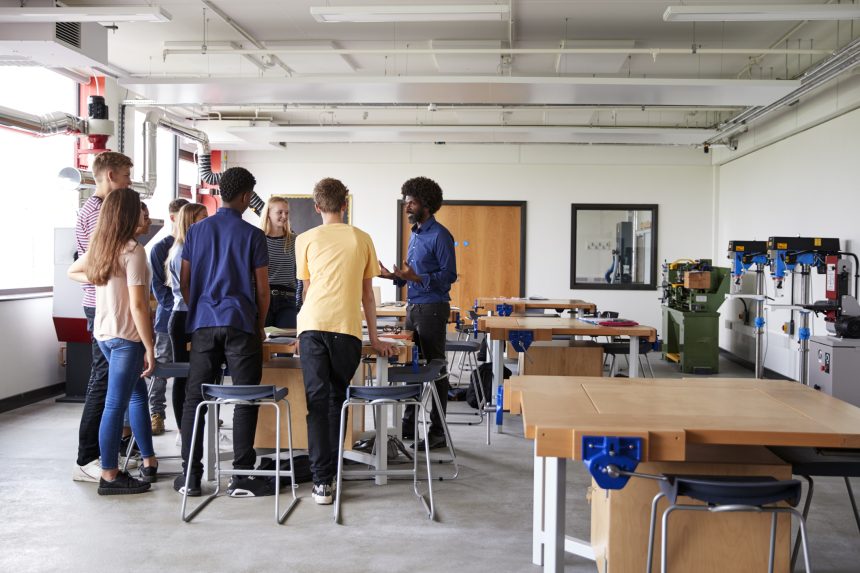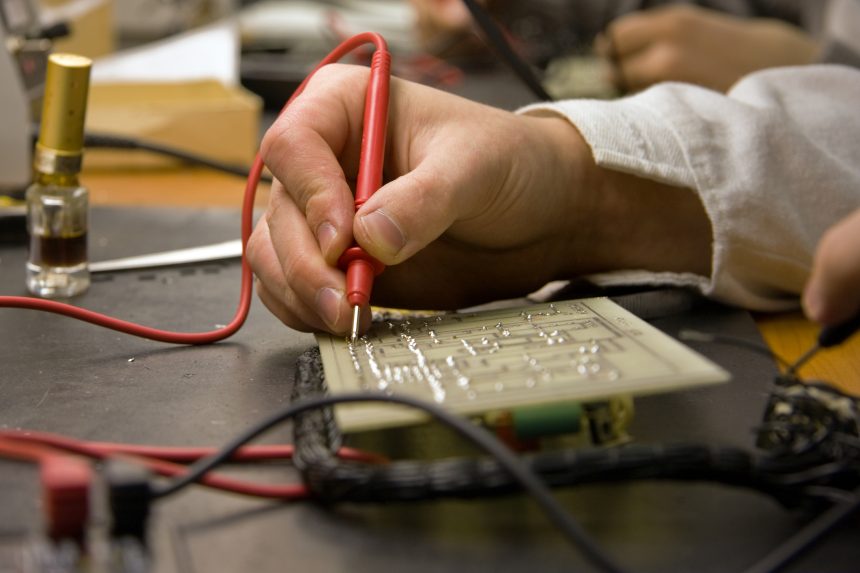Contents:
- What content is covered in A Level Product Design?
- How is A Level Product Design assessed?
- Is A Level Product Design hard?
- What grades do you need to do A Level Product Design?
- What skills will you develop when studying A Level Product Design?
- Where can A Level Product Design lead you?
- What subjects go well with A Level Product Design?
What content is covered in A Level Product Design?
If you study A Level Product Design, you will learn about the design and manufacture of products. It is hands-on and practical-based, with half your grade coming from a ‘design and make’ project.
You will learn about the fundamental principles underlying product design. This includes technical aspects like material properties and treatment techniques, and creative aspects such as user-centred design and the history of design movements.
Throughout your studies, you will become a more proficient and responsible designer. The course will teach you about the obligations of a designer, including current laws and regulations, and the role of climate change in modern design.
You will also have the opportunity to apply the knowledge you have learnt in class to designing and creating a product that solves a particular problem. You will develop your own brief grounded in real-world scenarios and consider the needs of potential users. Throughout the course, you’ll gain proficiency in various tools, including computer-aided design (CAD) software, which will be instrumental in bringing your project to life.

How is A Level Product Design assessed?
A Level Product Design is typically assessed through:
- 1 or 2× written exam papers constituting 50% of your final grade
- These focus on the principles of design.
- You may sit one paper, or your exam board may split the technical and design aspects between two papers.
- 1× non-exam assessment (NEA) worth 50% of your final grade
- You will select a problem from a set list and document your approach to developing a solution.
Is A Level Product Design hard?
A Level Product Design requires an understanding of design theory and the ability to apply it to creative project work. It can be challenging to balance these two aspects and a lot of work is required to succeed.
However, if you have a genuine passion for design and creativity and are willing to put in the effort (including outside of timetabled lessons), there’s no reason why you can’t succeed. In 2023, 96.5% of students passed A Level Product Design, with 40.6% of students achieving a grade B or above.

What grades do you need to do A Level Product Design?
The entry requirements for A Level Product Design can vary depending on the specific sixth form or college offering the course. Generally, you need to have a minimum of 5 GCSEs at grade 4 or above, including GCSE English Language and Maths. A creative GCSE, like Product Design, Design Technology or Art and Design, may also be required.
What skills will you develop when studying A Level Product Design?
A Level Product Design combines theoretical knowledge with hands-on practical work, enabling you to develop a comprehensive skill set.
By studying A Level Product Design, you will learn to approach problems creatively and evaluate the effectiveness of existing products, taking into account factors such as functionality, aesthetics, and market appeal. You will develop technical skills and become proficient in the use of tools and software such as CAD. You will also gain experience in creating prototypes and testing them to refine your designs based on real-world feedback.
A Level Product Design also fosters collaboration and communication skills. You will learn to work effectively in teams and present your ideas clearly through sketches, models, presentations, and reports. Additionally, you will acquire essential time management skills, learn how to plan and execute design projects, and meet deadlines.
Top tips for studying A Level Product Design
- Look out for inspiration – Wider reading and independent study are key parts of any A Level. Product design is about creativity, and the best way to foster creativity is to keep an eye out for inspiration. Anything could be a source of inspiration. At this level, studying the work of professional designers is a great way to discover and develop your own design aesthetic.
- Learn from examples – Studying existing products and designs isn’t just about observing their physical attributes. Analyse the design process behind these products. Consider the user experience, functionality, sustainability aspects, and how they’ve integrated various design elements. This analysis can help to inspire your own design choices.
- Document your process – Keep a comprehensive design journal or sketchbook. Document your initial ideas, development process, inspirations, and decisions made at each stage. This will help demonstrate your thought process to examiners.
- Understand the specification – Understanding the exam board’s requirements is crucial. It’s not just about creating a final product; it’s about meeting specific criteria. Break down the specification into smaller goals and make sure each design task aligns with these criteria. Refer back to them frequently to ensure you’re on the right track.
Where can A Level Product Design lead you?
A Level Product Design offers a practical path for those eager to go directly into industry after school or for anyone wishing to pursue higher education in design or related fields. It equips you with the technical skills to pursue a trade or craft but equally lays the groundwork for careers in the legislative or entrepreneurial side of design.
If you’re hoping to study design, architecture, or a similar subject at university, then A Level Product Design can help you develop a portfolio. Building your own portfolio is a key skill in this field, and any experience is worthwhile.

In today’s tech-driven world, expertise in design and technology is increasingly valued, opening doors to various specialised fields. A Level Product Design can lead to career paths in:
- Graphic design
- Materials science
- Architecture
- Engineering
- Software development
- Systems engineering
- Consultancy
- Carpentry
- Set design
What subjects go well with A Level Product Design?
A Level Product Design combines well with other practical subjects such as A Level Graphics and A Level Art and Design.
Additionally, mathematics and physics complement product design. Maths provides a strong foundation for problem-solving, critical in technical aspects of design and in understanding measurements, geometry, and calculations. Physics offers insights into forces, materials, and mechanics, which are fundamental in designing practical and functional products.
You might also consider taking A Level Product Design alongside computer science, as both subjects place a strong emphasis on problem-solving skills.


Comments